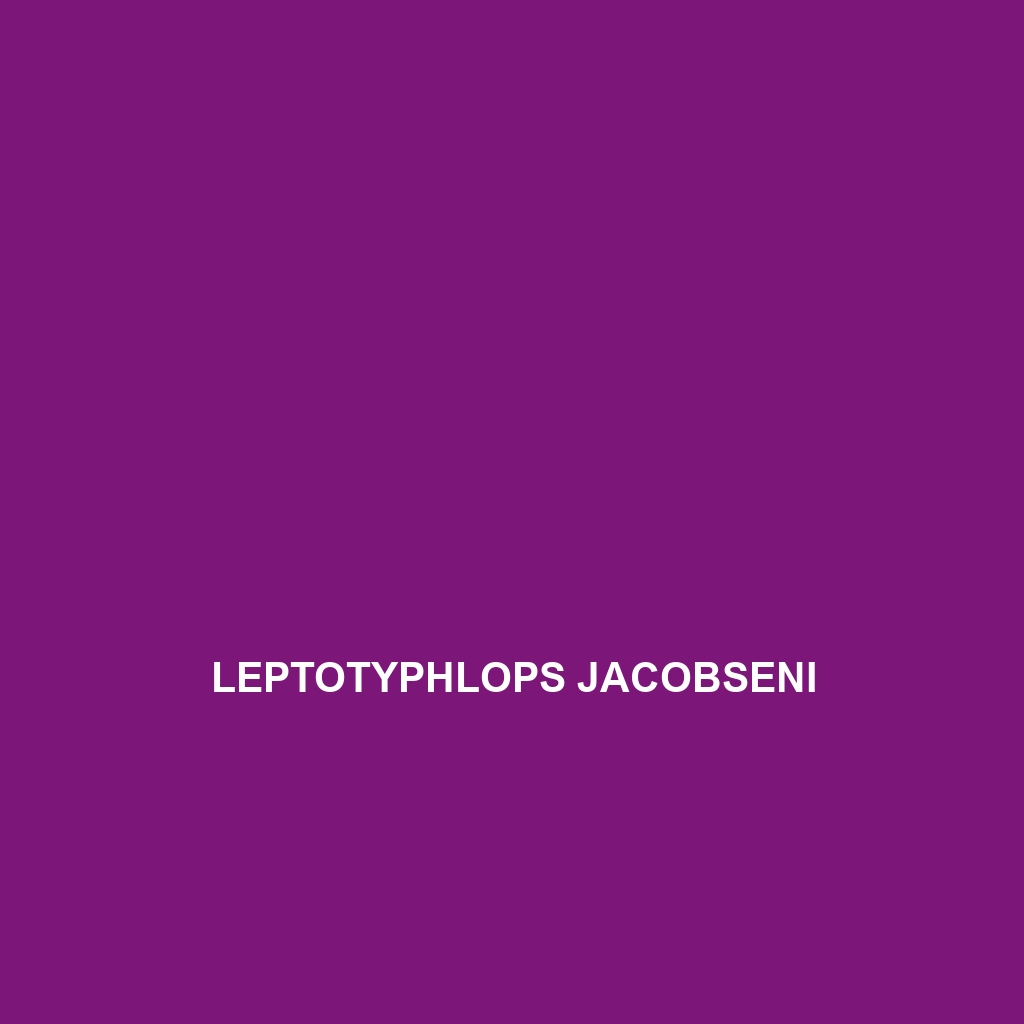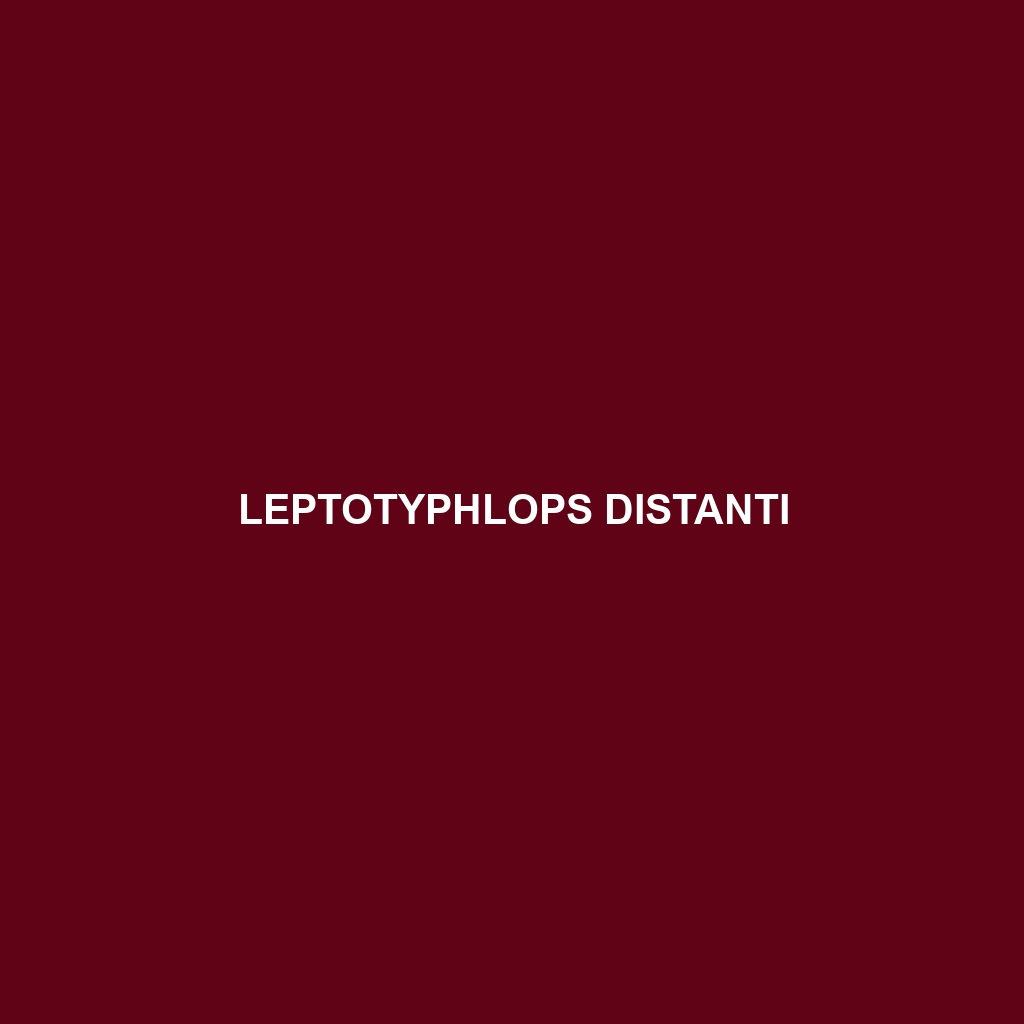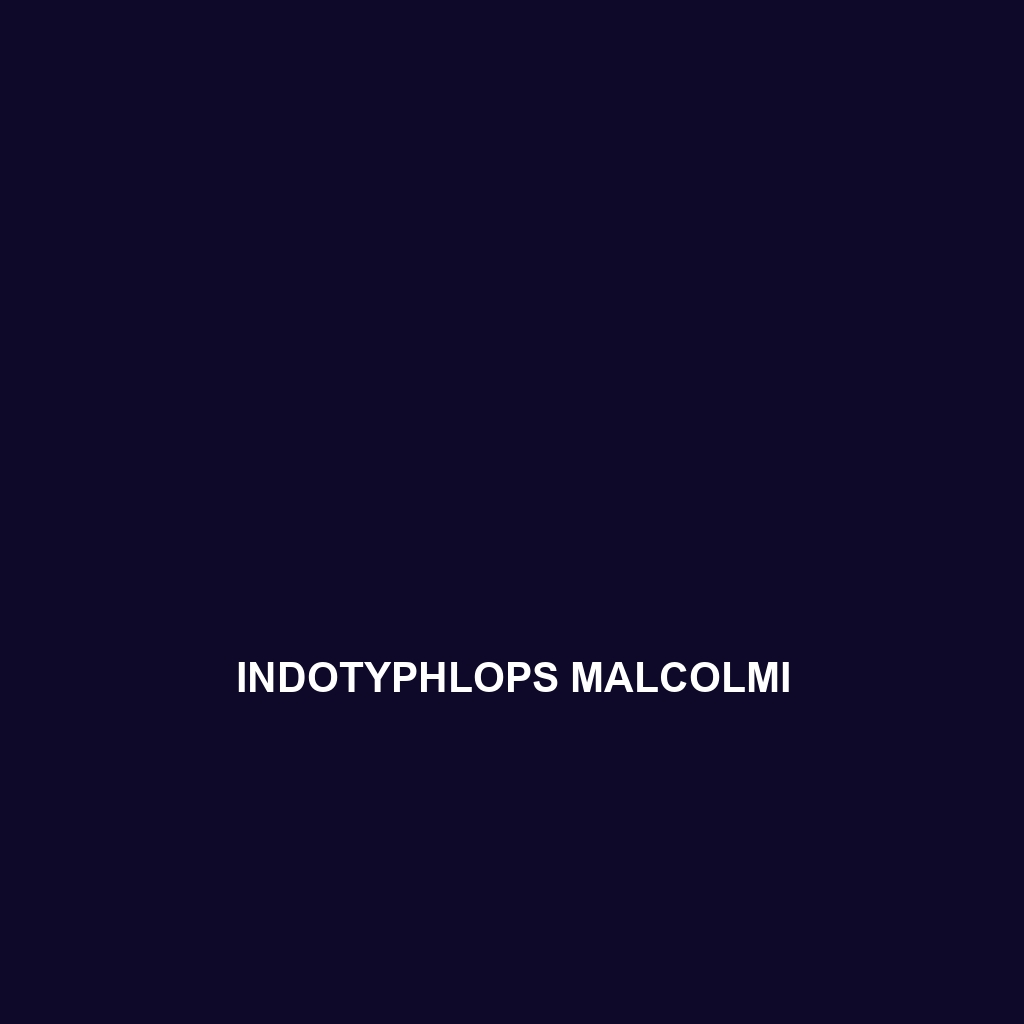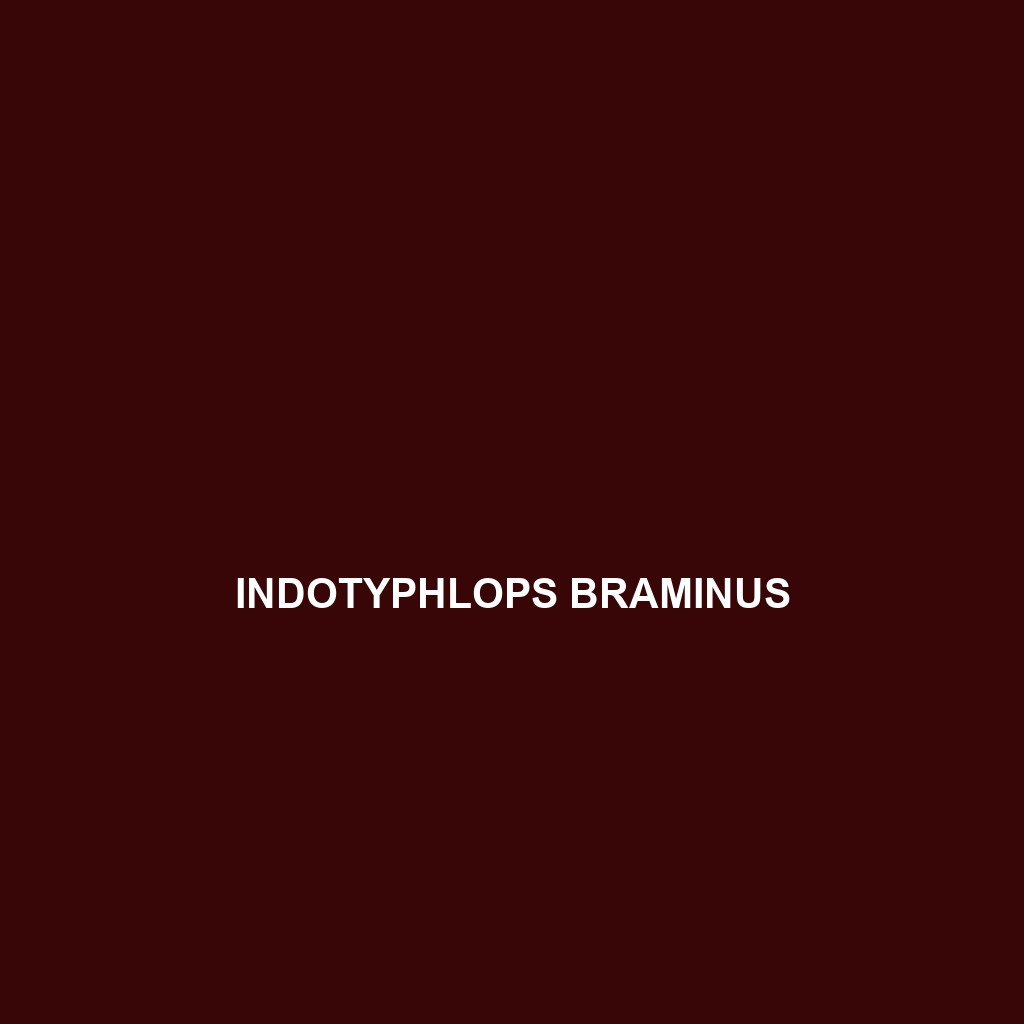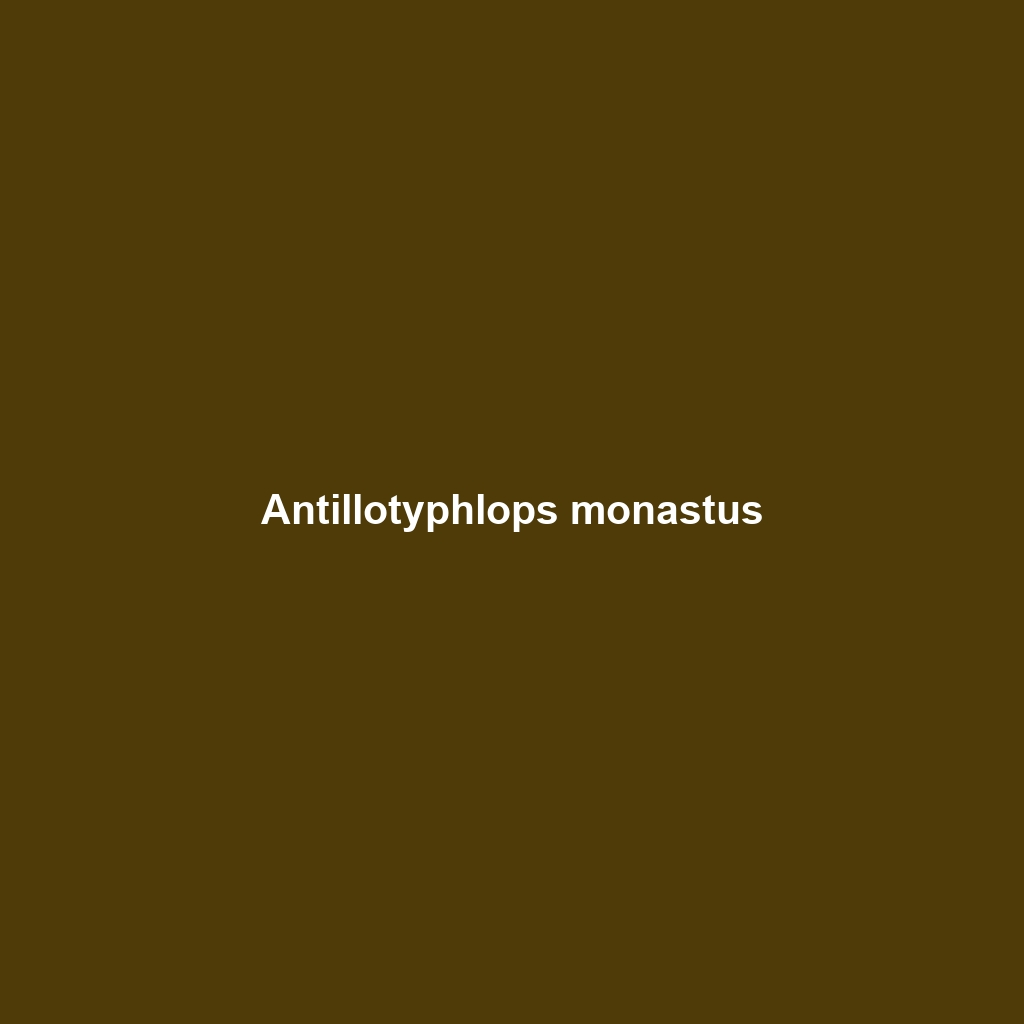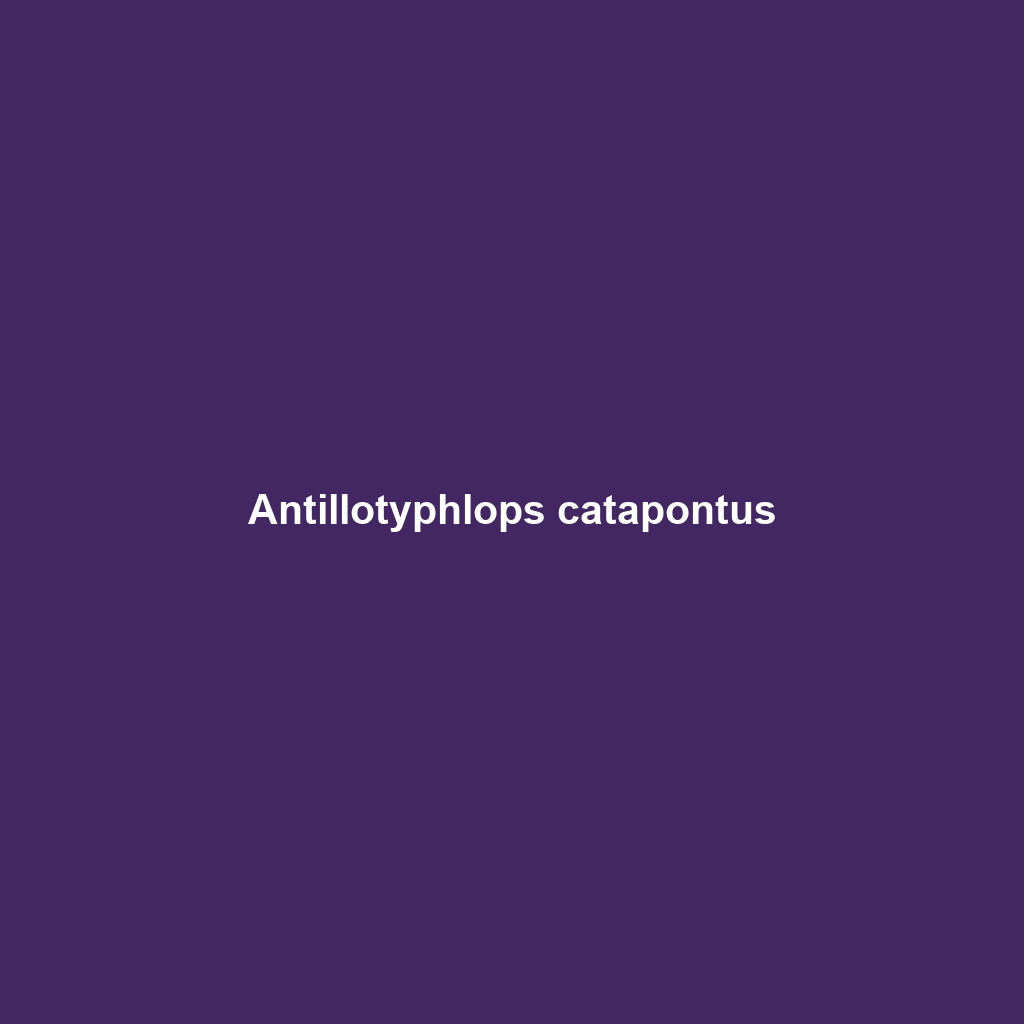<p><b>Leptotyphlops jacobseni</b>, commonly known as Jacobs' blind snake, is a small, non-venomous species native to the rainforests of Central and South America, characterized by its burrowing lifestyle, reduced eyesight, and diet primarily consisting of ants and termites. This unique snake plays a vital ecological role by regulating insect populations and contributing to soil health through its underground activities.</p>
Tag: Blind Snake Characteristics
Leptotyphlops distanti
Discover the Leptotyphlops distanti, also known as the distant blind snake, a fossorial insectivore primarily found in the tropical and subtropical regions of South America. With its slender, limbless body and reduced eyesight, this unique species plays a crucial role in controlling insect populations and maintaining ecological balance.
Indotyphlops malcolmi
Introducing the Indotyphlops malcolmi, or Malcolm’s Blind Snake, a small, nocturnal snake native to Southeast Asia, known for its smooth, elongated body and unique adaptation of blindness, allowing it to thrive in moist, loose soil while preying on small invertebrates. With a length of 10 to 15 inches, this remarkable species plays a vital role in its ecosystem by controlling pest populations and aerating the soil.
Indotyphlops albiceps
<p>Discover the <b>Indotyphlops albiceps</b>, or white-headed blind snake, a small nocturnal serpent native to Southeast Asia, thriving in humid rainforests. With a distinctive white head and a diet primarily composed of ants and termites, this resilient species plays a crucial role in its ecosystem.</p>
Antillotyphlops monastus
Discover the Antillotyphlops monastus, or Antillean blind snake, a small, fossorial species native to the Caribbean, known for its elongated body, cylindrical shape, and unique adaptations for a subterranean lifestyle. This vulnerable species plays a crucial role in its ecosystem by preying on small invertebrates and contributing to soil health.
Antillotyphlops catapontus
Discover the Antiguan blind snake (Antillotyphlops catapontus), a small, fossorial species native to Antigua, known for its smooth, cylindrical body, tiny non-functional eyes, and a diet primarily consisting of ants and termites. This nocturnal serpent plays a crucial role in controlling insect populations and aerating the soil in its tropical habitat.
Anilios tovelli
Discover the Tovell's blind snake (Anilios tovelli), a small, fossorial species native to Queensland, Australia, with a smooth, glossy body and a diet primarily consisting of ants and termites. Known for its gentle temperament and unique reproductive method of ovoviviparity, this snake plays a vital role in regulating pest populations in its ecosystem.
Anilios fossor
Discover the fossorial blind snake, Anilios fossor, a 40 to 55 cm long species native to eastern Australia, thriving in moist forests and sandy soils. This elusive creature, often mistaken for other snakes, plays a crucial role in controlling invertebrate populations and maintaining healthy ecosystems.
Anilios erycinus
Discover the Common Blind Snake (Anilios erycinus), a slender, fossorial species native to the tropical forests of northern Australia. Thriving in moist environments, this carnivorous snake plays a crucial role in regulating insect populations, contributing to ecological balance and biodiversity.
